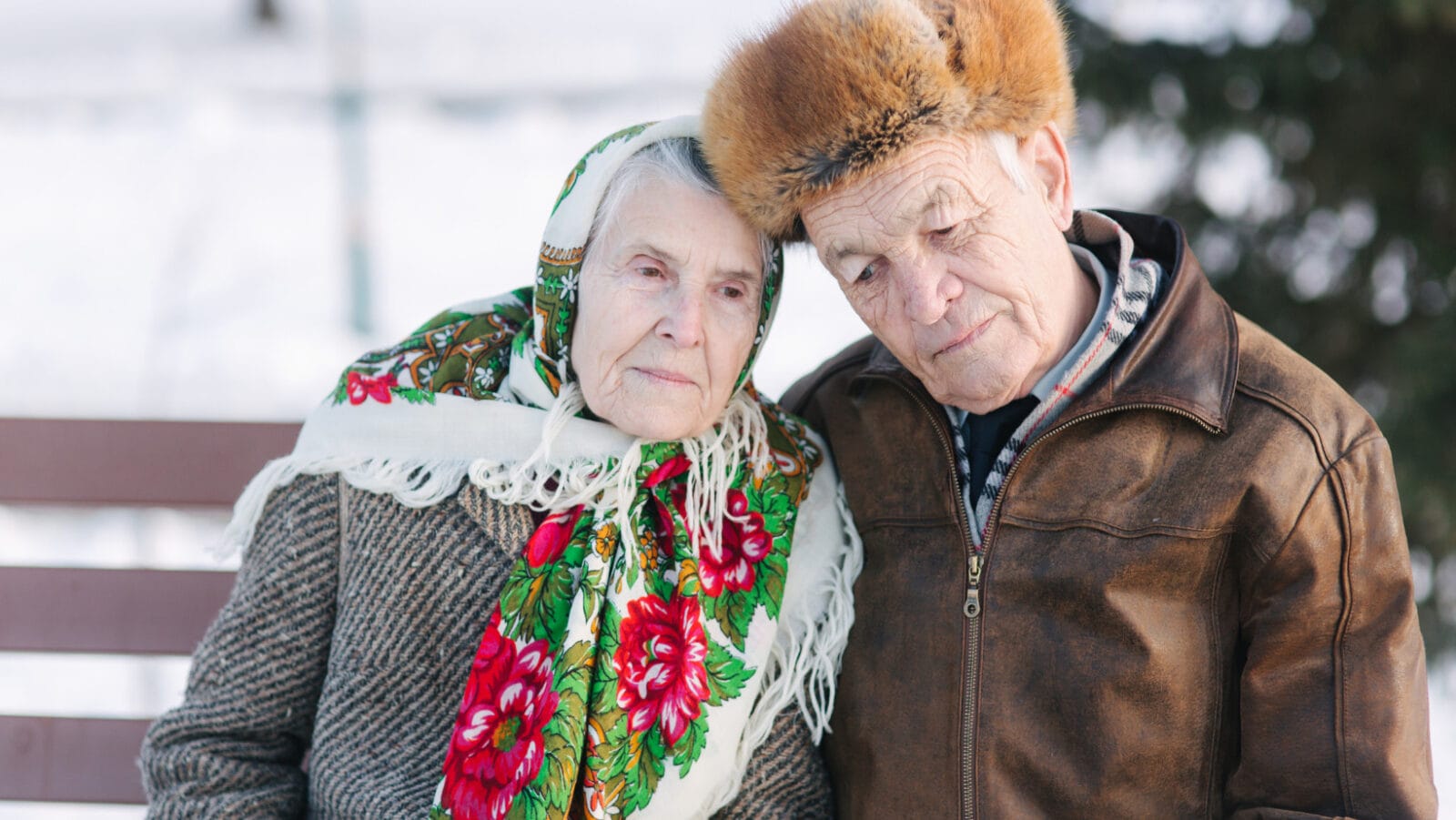While anyone can be affected by Seasonal Affective Disorder (SAD), seniors might be at greater risk. Because they are often exposed to less sunlight, are more likely to suffer from social isolation and health conditions, and experience circadian rhythm changes, many seniors suffer from SAD every year. This condition can be dangerous, as mental health has a pronounced effect on physical health. Thankfully, there are many ways seniors can beat the “winter blues” and fight seasonal affective disorder. Here, we will explore more about SAD, what to do if you think you might have it, and how to prevent it in the future.
What is Seasonal Affective Disorder (SAD)?
Senior Affective Disorder, often abbreviated as SAD, is a type of depression that is characterized by its presence during particular seasonal months. For most people, this means winter months, though, rarely, people can experience SAD during the summer instead. In this post, we are focused on winter-specific SAD.
In the Diagnostic Manual of Mental Disorders, the official book used by American psychologists to diagnose mental illness, SAD is called “Major Depressive Disorder with Seasonal Pattern.” Most people with SAD start to feel symptoms in late fall or early winter, and then the symptoms go away in spring and summer. Typically, SAD occurs for around 4 or 5 months of the year.
During the period of time a person is experiencing SAD, they will have depressive symptoms like (1):
- Feeling sad or having a depressed mood
- Loss of interest or enjoyment in activities they usually enjoy
- Changes in appetite; usually eating more, and craving carbohydrates
- Change in sleep; usually sleeping too much
- Loss of energy or increased fatigue despite increased sleep hours
- Increase in purposeless physical activity (e.g., inability to sit still, pacing, handwringing) or slowed movements or speech (these actions must be severe enough to be observable to others)
- Feeling worthless or guilty
- Difficulty thinking, concentrating, or making decisions
- Thoughts of death or suicide
Some studies have linked seasonal changes in brain chemistry to the development of SAD (2). So, it seems clear that SAD is a legitimate illness caused by biochemical changes in the brain. About 5 percent of adults in the U.S. experience SAD, and it typically lasts about 40 percent of the year. It is more common among women than men. (3) It is also more common in people living in Northern latitudes. For those living in Canada, Scandinavia, Scotland, and Russia, SAD affects about 1 in 6 people. (4)
How is SAD different from the “Winter Blues”?
While many people confuse the two, SAD is not the same as the “winter blues” many people experience. The symptoms of SAD are very distressing, and often severe enough to interfere with daily functioning. This is different from “winter blues,” which are unpleasant but do not rob you of most or all happiness and ability to enjoy life. SAD is different from the “winter blues” in the same way that depression is different from unhappiness.
If you’re experiencing the winter blues, you’re probably feeling more unhappy in the winter than you do during the summer. Many people also experience the “post-holiday blues” following winter’s major holidays, when there’s no longer much to look forward to for a while. However, if you don’t have SAD, you’re still able to enjoy your life. Your feelings of unhappiness aren’t causing you major or debilitating symptoms.
However, while they aren’t as severe as seasonal affective disorder, winter and post-holiday blues are still fun for no one. Many of the lifestyle and non-medical ways SAD is treated will also help with the winter and post-holiday blues.
What does Seasonal Affective Disorder (SAD) look like for Seniors?
For seniors, seasonal affective disorder symptoms will be similar to an adult of any age with SAD. The feelings of sadness and depression do not discriminate based on age. However, seniors might be more at risk for SAD, and it may be more dangerous for those who experience it. Seniors are at a higher risk of feeling isolated and lonely, and this can be exacerbated by winter driving conditions and difficulty traveling. Seniors may actually see fewer people in the winter, and may have reduced access to friends and loved ones. It’s also more difficult for seniors to spend time outdoors in winter, because they are at higher risk of falls and may have mobility challenges, among other reasons. Even if you are able to get outside every day during the winter, daylight hours are shorter and sunlight is less common.
The health risks of SAD are the same as those of any senior with a depressive disorder. Seniors with SAD could be at higher risk of developing or worsening illnesses, compromised immune systems, slower recovery from injury, and even death (5).
Thankfully, SAD is very treatable, and seniors have many good options to improve symptoms of SAD.
Tips for Seniors to Combat Winter Blues or SAD Symptoms
Whether you have diagnosed SAD, or just a general feeling of unhappiness like the “winter blues,” these tips can help.
Light Therapy
Some evidence suggests that changes in circadian rhythms and fewer daylight hours might contribute to the development of Seasonal Affective Disorders. You can combat this with light therapy! The best source of Vitamin D comes from the sun, so if the sun is shining, try to get outside even if it’s cold out. Bundle up in a hat, gloves, and down coat and aim to spend at least a few minutes outside every day.
However, since the sun’s rays aren’t as powerful during the winter months and cold or inclement weather will prevent you from being outside for long periods of time, you have other options. Consider investing in a “happy light,” or light therapy lamp. There are many different types easily available online. To use light therapy most effectively, sit near the light for 30 minutes a day, as close to waking as possible. You don’t need to stare into the light, just read, relax, or even eat breakfast next to it. Please note that people with diabetes should check with their doctor before using a light therapy lamp.
Stay Active
Winter can be an easy time to “hibernate” and spend a lot of time on the couch or in bed. While rest is definitely important, staying active may help to combat the sadness associated with SAD. Exercise does not become less important in the winter months, though it may be more challenging. It’s also a great way to boost your mood and energy! Daily moderate-intensity exercise has been shown to be as effective as antidepressants in treating depression (6). Check out this post for winter-friendly exercise tips for seniors.
Stay Connected
Along with the desire to hibernate at home, you may find yourself seeing less of your family and friends. This lack of connection can make depressive symptoms much worse. Keep up your social engagements and make sure you’re keeping in touch with your loved ones. Try joining a book club or other hobby club, visit your local community center, have lunch with your senior living neighbors, get a walking buddy at an indoor track–there are many ways to stay connected. If you can’t get together in person, try using voice and video messaging, text messages, or phone calls to stay in touch.
Get Professional Help
If the above tips aren’t cutting it and you find the symptoms of Seasonal Affective Disorder to be interfering with your life, don’t be afraid to talk to your doctor. In many cases, medication and/or counseling can be necessary to cope with SAD. This is nothing to be afraid of or ashamed about. If medication doesn’t work for you, you can always stop taking it. It’s worth a try. Counseling is helpful for most people, and can provide you with valuable tools and resources to help with SAD.
Seasonal Affective Disorder is serious, and can even lead to suicidal behavior. Don’t wait to seek help.
You can beat the winter blues and treat Seasonal Affective Disorder in seniors so that winter doesn’t have to get you down. Stellar Living hopes these tips help you have a wonderful winter this year.




